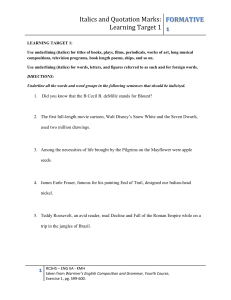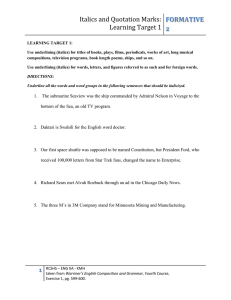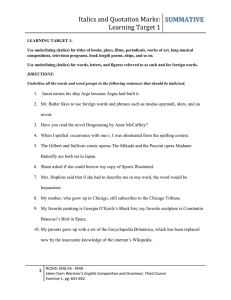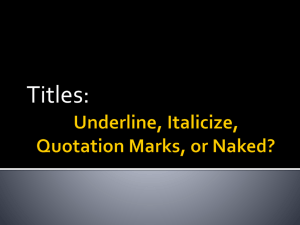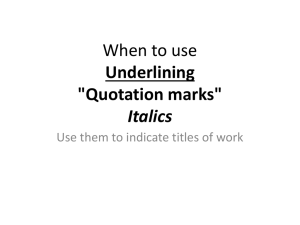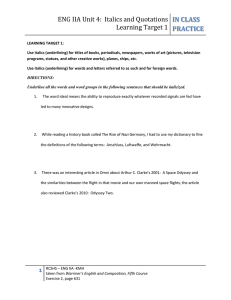Guidelines – Using bold, italics, underlining, and
advertisement
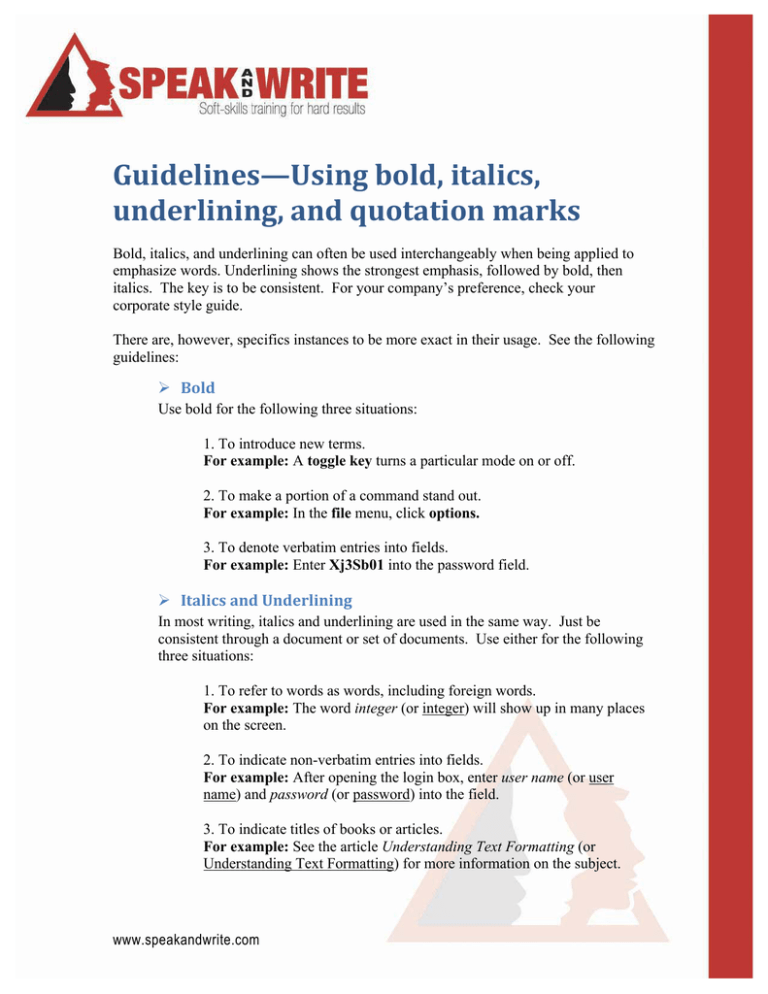
Guidelines—Using bold, italics, underlining, and quotation marks Bold, italics, and underlining can often be used interchangeably when being applied to
emphasize words. Underlining shows the strongest emphasis, followed by bold, then
italics. The key is to be consistent. For your company’s preference, check your
corporate style guide.
There are, however, specifics instances to be more exact in their usage. See the following
guidelines:
Bold Use bold for the following three situations:
1. To introduce new terms.
For example: A toggle key turns a particular mode on or off.
2. To make a portion of a command stand out.
For example: In the file menu, click options.
3. To denote verbatim entries into fields.
For example: Enter Xj3Sb01 into the password field.
Italics and Underlining In most writing, italics and underlining are used in the same way. Just be
consistent through a document or set of documents. Use either for the following
three situations:
1. To refer to words as words, including foreign words.
For example: The word integer (or integer) will show up in many places
on the screen.
2. To indicate non-verbatim entries into fields.
For example: After opening the login box, enter user name (or user
name) and password (or password) into the field.
3. To indicate titles of books or articles.
For example: See the article Understanding Text Formatting (or
Understanding Text Formatting) for more information on the subject.
www.speakandwrite.com
Quotation Marks Use double quotation marks (" ") for the following:
1. A direct quote
For example: He said, "I have no idea when this project should be
finished."
2. Special emphasis on technical terms or business jargon not likely to be
familiar to the reader.
For example: Joe doesn't seem to have the "bandwidth" to take on the
project.
3. A title that represents part of a complete work, for example, titles of
chapters, lessons, topics, sections, and parts within a book.
For example: See Chapter 2, "Three Successful Strategies" on best
practices.
Use single quotation marks (' ') for only one reason—to show a quote
inside a quote.
For example: Then she said, "The witness made it clear that the defendant
answered 'no' to the question."
www.speakandwrite.com
